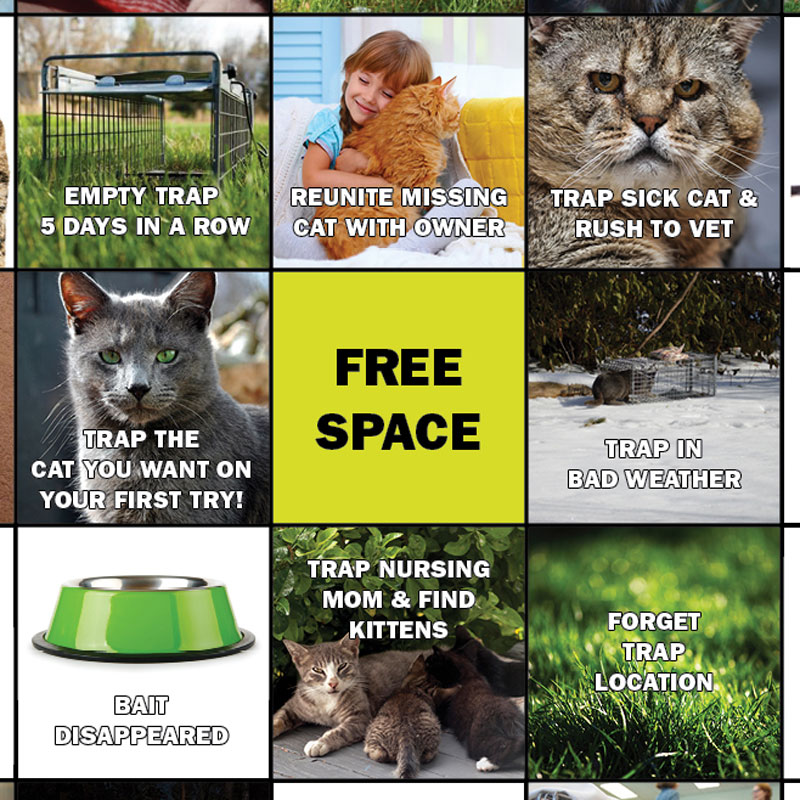
Let’s Play Trapper Bingo!
August 12, 2018
Interview! Danielle Bays, Director of Cat Protection and Policy, Humane Society of the United States
August 19, 2018
 Volunteer coordination, recruitment and management are some of the most challenging issues that we face in this business. Below are a few points to consider when you are setting up your program — or doing a wellness check on an existing program.
Volunteer coordination, recruitment and management are some of the most challenging issues that we face in this business. Below are a few points to consider when you are setting up your program — or doing a wellness check on an existing program.
- When someone expresses interest in volunteering with your organization, do you have a way to respond to that request in a timely manner? If you don’t respond to folks quickly, they will lose faith in your organization and will feel early on that they aren’t needed or appreciated. So your first “hire” should be a volunteer coordinator who is tasked with making sure that allvolunteer inquiries (in person, by phone, email, or through a submission form on your website) receive a prompt, friendly — and appreciative! — reply.
- It is okay to recruit volunteers. Again, a volunteer coordinator will be key in the recruitment process, however — so before even putting it out there that you are looking for volunteers, you need to first recruit that volunteer coordinator. Be clear in your outreach that you are specifically looking for someone to fill that coordinator role. Once that person is in place, he or she can help structure a program that works for everyone. Make sure you keep the lines of communication with the volunteer coordinator open and working — and that he or she knows what their level of authority is (and isn’t!)
- Once you have interested volunteers, communication is key. It’s important to always remember that volunteering serves both the organization and the volunteer. We all have certain expectations when we volunteer — and organizations have certain expectations of their volunteers — so it is good for everyone to know about those wishes up front. Make the organization’s needs, as well as any rules or specific expectations, clear in a manual or agreement document. Ask volunteers what they hope to get out of the experience on your application or when you talk with them. If it seems like the volunteer’s desires don’t match the organization’s, please don’t try to force it. Stay focused on your organization or program’s needs and goals and finding volunteers that fit, rather than trying to create a role for everyone who wants to volunteer. It’s OK to say that you don’t think your organization is a good match for a potential volunteer!
- As they say in human resources: hire slow, fire fast. The same holds true for volunteers. How can you fire a volunteer, you ask? You can, but as you might guess, it is very challenging to do. Even though volunteers will sometimes leave by mutually amicable agreement, even that can still leave an awkward feeling. Most volunteers are also donors, so that makes things more challenging too. Make absolutely certain when you decide to fire a volunteer that you do it very carefully, privately and with tact — and don’t EVER email other people about human resource-type issues you may have with a volunteer (or an employee, for that matter)! Have you ever sent that email meant for one person to the VERY WRONG person by accident? I have and it is a terrible experience. I learned that lesson a long time ago. Basically, the moral of the story is: assume anything you write in an email can and will be shared with others. Always be careful and respectful with your words.
- Don’t reinvent the wheel if you don’t have to. Things like applications, release forms, manuals, agreements, even animal care protocols, etc. have likely already been created by another organization that is willing to share. Some may even have theirs posted on their website. If not, reach out to their volunteer coordinator and ask if they are willing to share materials to give you a starting point. Who knows, they might even have tips on volunteer recruitment you can use — and if they are local to you, maybe they even have volunteers they don’t have a need for right now that they are willing to pass along to you! Collaboration and working together are the name of the game these days in animal welfare, so use that to your advantage in your volunteer program!
- Look online (& beyond!) for advice, ideas, and support. If you feel like your existing volunteer program needs a major tune-up, search online for programs that can help (often for free!). Maddie’s Fund recently sent out an email about the Volunteer Program Assessment at the University of North Carolina Charlotte, for instance. Many general animal welfare resource sites — and animal welfare conferences — offer lots of great tips on setting up and maintaining a volunteer program as well. Do a Google search and see what you can find! Other organizations’ social media feeds can also offer tips on recruitment and ways to engage volunteers.
A strong volunteer program can make all the difference in the world to your organization — and the animals you assist. Good luck making your program the best it can be! Let us know what your best volunteer program-related advice is!
Published August 19, 2018.




